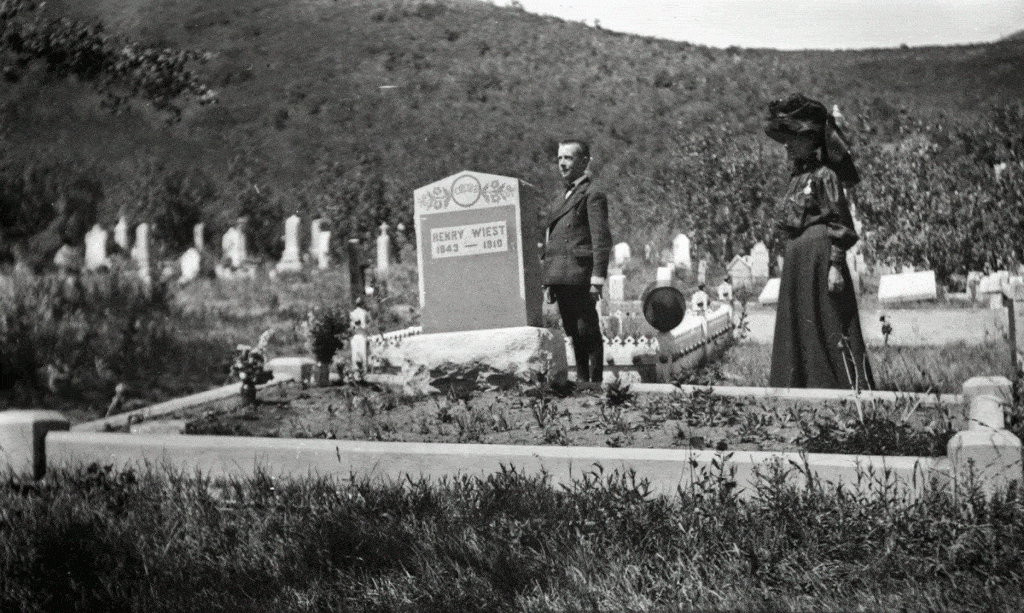Established in 1885, the Glenwood Cemetery’s five acres were purchased by Park City’s fraternal organizations to provide a final resting place for their members – many of whom were miners – and their families. Today, the Glenwood is a peaceful refuge; People walk along its trails under the canopy of aspen trees, and it serves as a sanctuary for natural vegetation, wildflowers, and animals. However, in the early days of Park City, this peaceful spot was a much-needed final home for residents, since life in the late 1800s and early 1900s was difficult and filled with unexpected dangers, illnesses, and accidents.
As a miner, the daily work in the mines could be harmful to one’s health. Many miners contracted miner’s consumption through the inhalation of dust from drilling, blasting, and mucking. Some, like John Whitta – a resident of the Glenwood – left mining to prolong their lives. Although Whitta eventually succumbed to miner’s consumption, he was able to fill his life with music, founding both the Park City Independent Band and Park City Juvenile Band, and teaching orchestra at Park City schools. For those who could not or did not leave mining, joining fraternal organizations gave miners and their families security by providing life and health insurance that the mines did not, as well as arranging for burial in the Glenwood.
This insurance was crucial to miners and their surviving families when mining accidents were common occurrences. The largest single mining accident occurred in 1902 at the Daly West Mine where an explosion – and subsequent toxic gas that filled the Daly West and neighboring Ontario Mine – killed thirty-four men, including Michael Crowley who is buried in the Glenwood.

Credit: Park City Historical Society & Museum, Mel Fletcher Collection
Luckily, other catastrophic events in Park City’s history did not send any residents to the Glenwood. During the Great Fire of 1898, not a single resident was killed, although a Saint Bernard name “Duke,” who was locked in the Kimball and Bates Drugstore, perished. Again, in 1916, when the Dewey Theatre’s roof collapsed after a heavy snow, no one was hurt since the theatre manager sped up the silent film to get the audience out of the building earlier than scheduled. Yet the residents of the Glenwood can tell these tales, too. For instance, Blanche Wiest Fletcher was ten years old during the Great Fire and was playing the organ to accompany the film at the Dewey Theatre the night the roof collapsed.
In total, 949 individuals are buried in the Glenwood Cemetery. Their lives and deaths tell stories of the growth of Park City and mining, advancements in healthcare, bar brawls, murders, love triangles, and, generally, life in the American West. By preserving and telling these and other stories along with the cemetery, we can keep these Park City residents’ memories alive for future generations and learn valuable lessons about hard work, family, and more along the way.
To learn more about the lives and deaths of many of Park City’s early residents, join the Park City Museum for tours on Tuesdays and Thursdays from 10:30 a.m. to 11:30 a.m. at the Glenwood Cemetery through September 1. Tickets are $15 and must be purchased in advance on the Museum’s website.